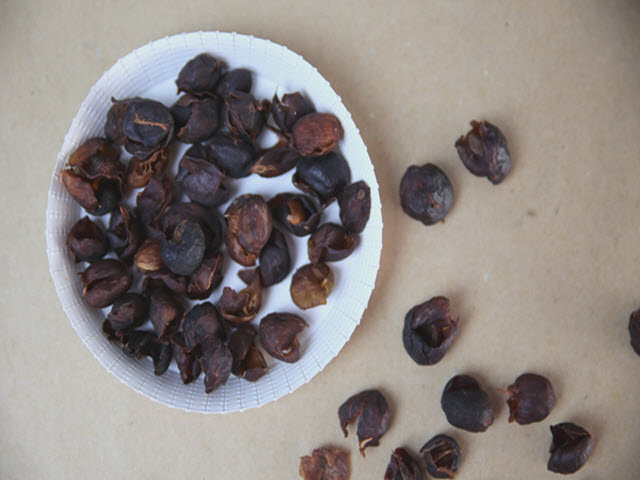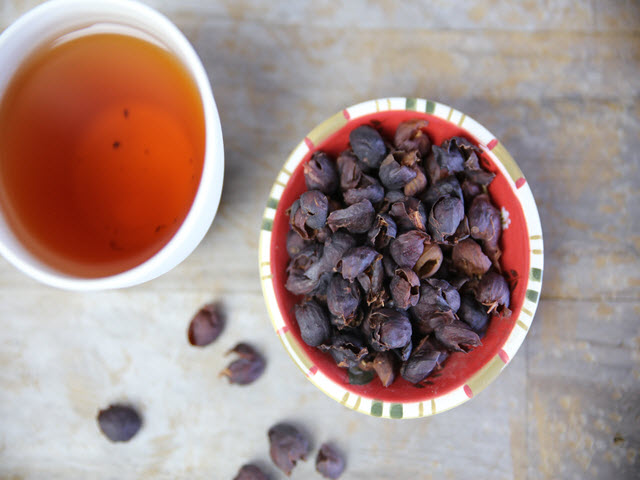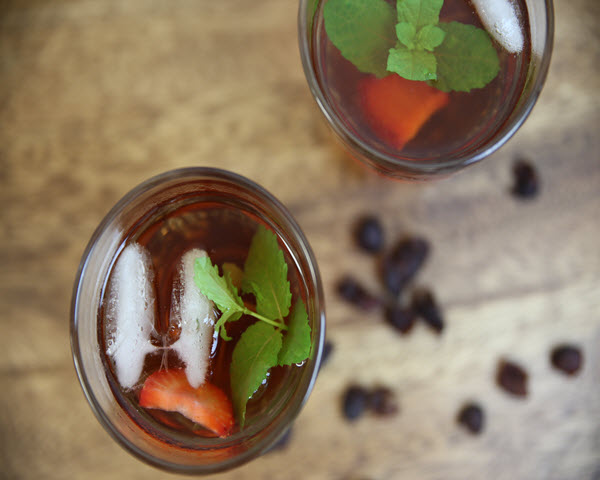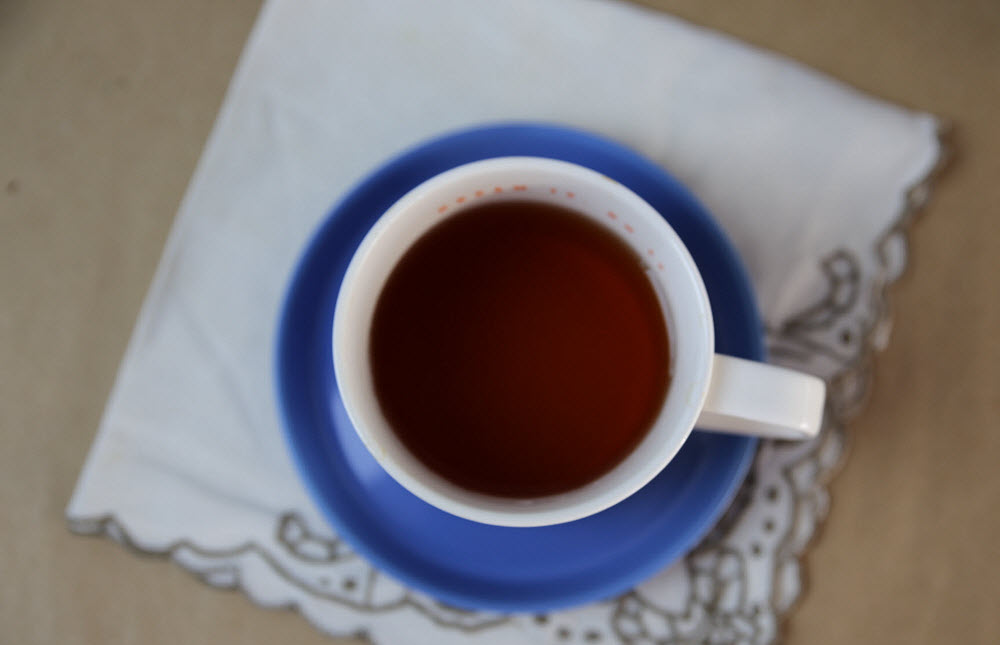Product Review: Campos Cascara

Move over coffee, watch out tea! There’s a new kid on the block. It’s called Cascara and you’ll spot it at coffee chains like Campos as the new trendy hot or cold beverage (think iced teas). As they say online: “Not quite coffee, not quite tea, but both (and deliciously healthy).” So what the heck is it? And should you be buying some to brew?

This post has been sponsored by Campos
What is cascara?
To start with, Cascara comes from the Spanish word for “skin” or “husk”. It is the dried outer husks of the coffee bean. It was once discarded as a waste during the coffee harvest but now has been revitalised into this wonderful drink.
To make it, the coffee husk is removed from the bean. Then it’s steamed to kill any bacteria and dried slowly over 15 hours to reduce its moisture. It maintains its whole structure, looking like round “shells” the size of cherries with the texture of fruit leather. It has a sweet, pleasant aroma and floral overtones.
Although it’s a relatively new product in Australia, it has been consumed for centuries in Ethiopia and Yemen. In Yemen it is called Qisher, and is often brewed with ginger or cardamom.
Don’t confuse it with Cascara Sagrada, a herb derived from the bark of a shrub that has been used for centuries for its laxative effect. They are two different plants.
How to brew

This is the same method for making herbal tisanes (teas) which do not need hot boiling water at 100 degrees Celsius. They produce a nicer brew at a temperature lower than boiling, as does the Cascara.
Taste: 7 out of 10
When brewed, the hot Cascara tastes of lovely flavours – peach, berry and hibiscus, with a slightly tart but refreshing finish. It was nice but not what I was expecting. At first, I thought it needed a spoon of honey or maple syrup to balance it but that was my first tasting. Now I like the taste as is!
Being totally truthful, I preferred the iced version to the hot version. When chilled, it reminded me of a refreshing iced tea and worked well with a sprig of fresh mint or rosemary or a few berries plus a big ice cube.
I made up a lot of jugs of chilled Cascara during the hot weather and enjoyed it immensely.
Despite its name “Coffee-Cherry Tisane”, don’t expect it to taste of cherries. Campos explained to me that this word “cherry” is the industry name given to those coffee berries growing on the bush which look just like gorgeous red cherries hanging in clusters when ripe! Most interesting.
With it’s pretty salmon-pink hue, my hunch is that this brew will find many foodie uses – from an elegant sorbet to a poaching liquid for pears or peaches. Not to mention a nice top-up to an Aperol spritz. I often mixed it half and half with sparkling mineral water for an effervescent low-kilojoule drink before dinner.
Over the last few weeks, I’ve made it up and offered it to many to gauge their reactions. They range from thirst-quenching to ok but surprised at how nice a pinkish herbal tea can taste.
Nutrition: 17 out of 20
As with tea and coffee, Cascara has so few kilojoules/Calories as to be negligible with little protein, fat, carbs or sugars. It’s basically water, with little caffeine (more on this later) and lots of beneficial polyphenol antioxidants.
One 150mL cup supplies a tiny 42 kilojoules (10 Calories), almost no protein, fat or sodium (salt). It has 2 grams of carbs and less than 1 gram of fibre, as you’d expect from any outer protective husk.
It contains no ingredients that are known allergens such as added sulphites.
Nutritional figures
Per 150 mL cup as brewed
| Component |
Per 100 mL | Per cup 150 mL |
| Energy, kJ | 28 | 42 |
| Energy, Cal | 7 | 10 |
| Protein, g | 0.3 | 0.5 |
| Fat, g | Less than 0.1 | Less than 0.1 |
| Carbohydrates, g | 1.3 | 2 |
| Sugars, g | 0.9 | 1.4 |
| Dietary fibre, g | <0.5 | 0.8 |
| Sodium, mg | Less than 5 | Less than 5 |
| Caffeine, mg | 16 | 25 |
What about the caffeine?
Being a derivative of coffee beans, there is a little caffeine in Cascara. However it’s quite low.
Comparing the caffeine concentration in mg per Litre, you can see that Cascara has less than green or black (regular) teas but more than cola soft drink and more than herbals such as chamomile or mint. So it’s not caffeine-free but is a low-caffeine choice. If you’re sensitive to caffeine or are pregnant or breastfeeding, this would not be for you.
| Expresso coffee, no milk | 1940 |  |
| Cappuccino | 940 | |
| Latte | 380 | |
| Energy drinks e.g. Red Bull | 320 | |
| Green tea | 250 | |
| Black tea | 190 | |
| Cascara | 166 | |
| Coke, diet | 128 | |
| Coke, regular | 97 | |
| Chamomile tea | 0 | |
| Mint tea | 0 |
However once you rank caffeine by serve size, Cascara drops down as its volume in a cup is much less than popular coffees and cans of cola. Only the caffeine-free herbals are less.
| Drink | Serve size | Caffeine mg/serve |
| Cappucino | 250 mL | 235 |
| Latte | 250 mL | 95 |
| Energy drinks e.g. Red Bull | 250 mL | 80 |
| Espresso coffee, no milk | 40 mL | 78 |
| Green tea | 300 mL | 75 |
| Black tea | 300 mL | 57 |
| Coke, diet | 375 mL | 48 |
| Coke, regular | 375 mL | 36 |
| Cascara | 150 mL | 25 |
| Chamomile and mint infusions | 200 mL | 0 |
Source: NUTTAB, Australian Food composition 2013, and company websites.
Health benefit - lots of polyphenols
Cascara’s big bonus is its remarkable level of polyphenols known as flavanols.
I have written about these before. Polyphenols are a large class of bio-active compounds found in fruit, spices, tea, coffee, cocoa and vegetables. There are over 4,000 and they include many sub-classes such as flavonoids which are further divided into flavonols, flavonals (including the catechins such as epicatechin, epicatechin gallate, epigallocatechingallate and gallocatechin gallate) and anythocyanins (a bit of a simplification but you get it).
Many are powerful antioxidants and can neutralise harmful free radicals, reduce inflammation and slow the growth of tumours. Scientists believe they can hold back the clock and keep the blood flowing freely.
Polyphenols add astringency. You'll notice it in tea or the bite of red wine or pomegranate molasses. Anything that makes your mouth pucker generally contains polyphenols.
There are high concentrations in tea, cocoa, coffee and red wine, which have been widely tested and have lots of evidence of benefits.
According to lab analysis by Campos, they’re present in Cascara too. It offers 375 mg of flavanols in a cup OR 25 mg per 100 mL. Its nice bonus is that you get these healthful compounds but with substantially fewer kilojoules, fat or sugar than from many cocoa products or milky coffees or coconut coffees. Epicatechin is the catechin present in Cascara.
For comparison, a cup of green tea offers about half at 173 mg while a cup of filter coffee has a little more at 408 mg.
It’s too early to tell how well these flavanols in Cascara act (as no-one has done any testing) but nutritionists would expect them to exert the same health benefits as coffee, tea and cocoa. It’s a case of wait and watch. For now, I’m adding it to my kitchen cupboard.
Convenience: 7 out of 10
Cascara is not as quick or convenient as just opening a bottle and drinking it. The process of making it is identical to brewing your own tisane at home but you start with reddish-brown husks instead of dried leaves and you get all the health benefits.
Sustainability 9 out of 10
This Campos Cascara wins points for its whole sustainability focus. I was most impressed! Their Cascara comes from an organic coffee farm high in the Llano Bonito de Naranjo community of the West Valley of Costa Rica. Llano Bonito de Naranjo translates to "The Beautiful Plain of Naranjo".
This area in the Naranjo Mountains is already well-known for producing some of the best coffee in the country due to the rich volcanic soil in the region.
Their coffee growers have been researching with the University of Costa Rica for three years and have now invested in a plant to dehydrate the coffee pulp.
So what would have been thrown out and gone into compost or landfill has now become a delicious fruit tea drink with benefits. A great way to save on food waste and re-use a waste stream.
Yes there’s the whole issue of food miles to Australia but the same can be said of any coffee, tea or cocoa. We grow a little but not enough to supply the demand we have now for such products. I just love this whole story.
Overall score 40 out of 50 or 4 apples









